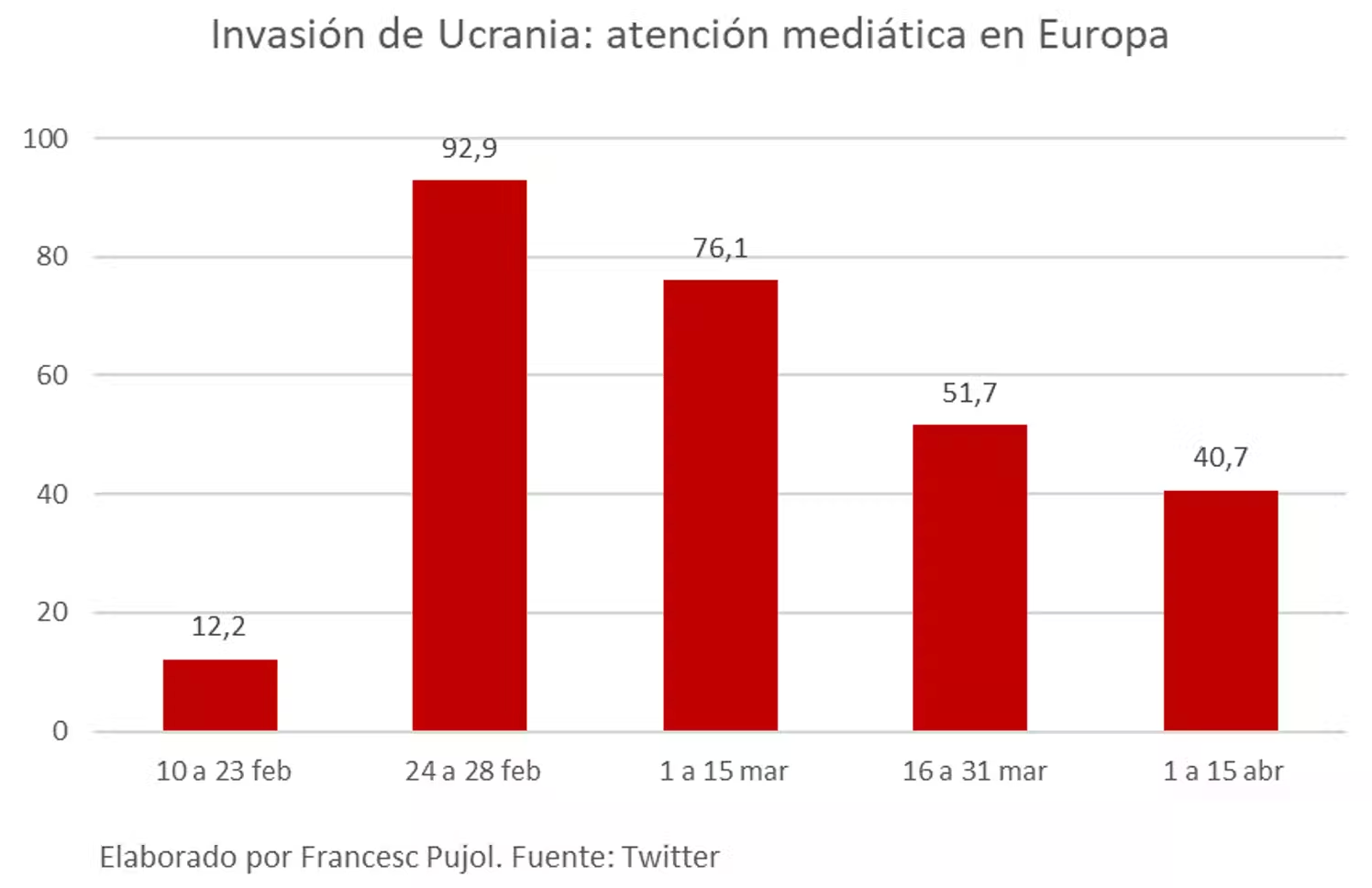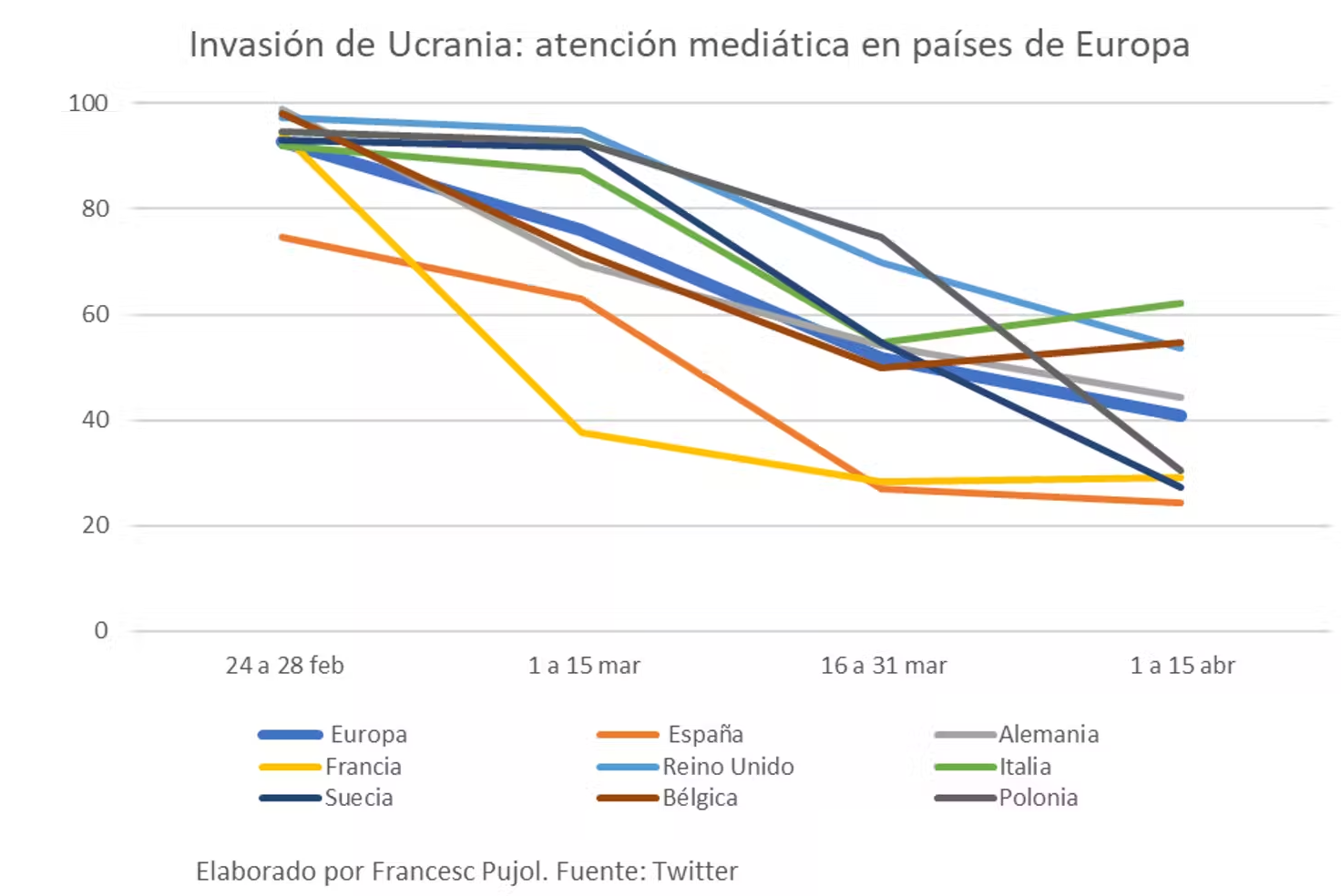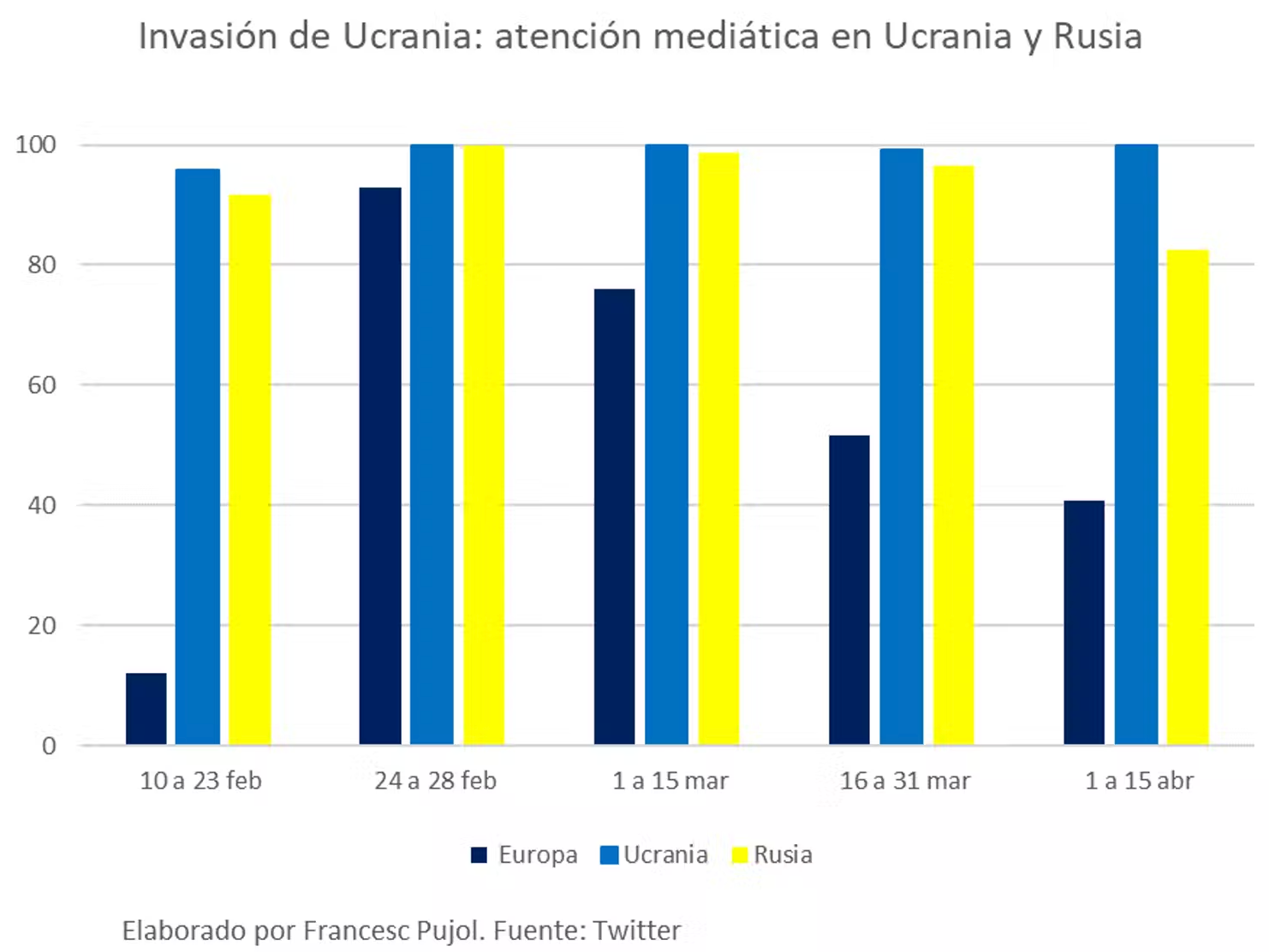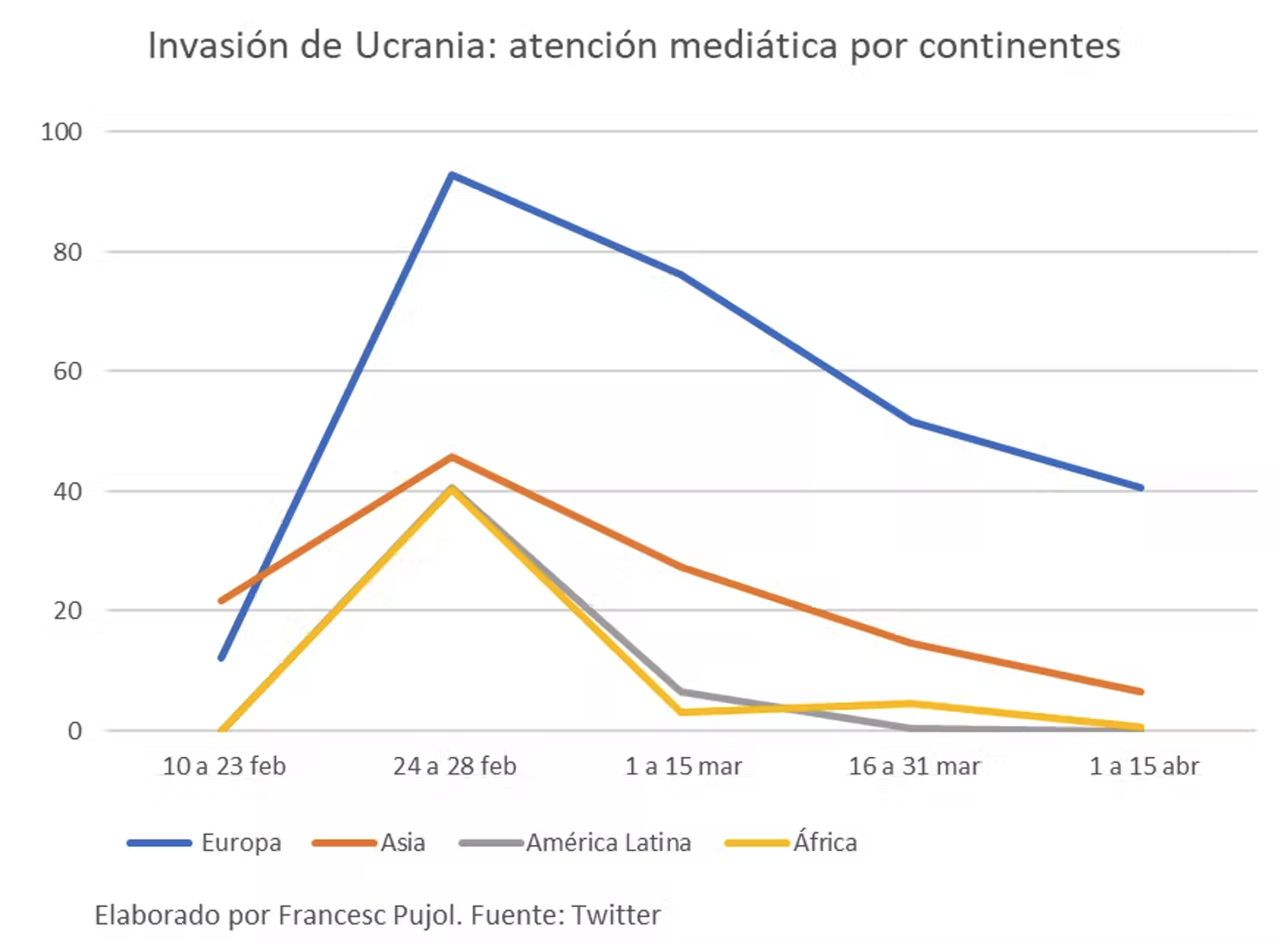01/05/2022
Published in
The Conversation
Francesc Pujol
Lecturer at Schoolof Economics
How much media coverage does the invasion of Ukraine receive around the world, and how extraordinary and long-lasting is it? These are questions of interest to scholars of media impact and crisis communication. And they are also relevant questions to address at framework of the war in Ukraine because media attention is an additional ingredient that undoubtedly influences the course of events.
The main vector of influence of media attention is the popular pressure it exerts on allied countries to participate actively in supporting Ukraine by sending military equipment and weakening Russia by increasing the weight and severity of sanctions. This popular pressure also reaches companies with a business and presence in Russia, as has been evident in the first weeks of the crisis.
In this article I show the measurement of the media attention aroused by the invasion of Ukraine in several countries, from its beginning (10 February 2022) until 15 April. It therefore covers the impact of the first 7 weeks of the invasion and the two weeks prior to that.
Media attention and coverage
Media coverage is the space allocated to an issue by a media outlet. Media attention is the interest that such content arouses in readers or audiences.
Measuring attention has been greatly facilitated by online content platforms and their extension to social media channels. The impact of each article published can be precisely measured. This new tool for content managers has had a revolutionary impact because this information, harvested instantly, in turn influences the exhibition and visibility given to that news item and then to that topic; attention influences coverage.
The methodology I follow to generate media attention metrics is the impact that each news item generates on the social Twitter network from the official accounts of the news media. We count the number of interactions of each tweet: retweets and likes. These measures are good proxy variables for the impact generated by each news item disseminated on Twitter.
The specific indicator of media attention that we have selected is as follows: for each media outlet, we select the tweets that have generated the greatest impact on the audience (retweets and likes). From this selection, we calculate the percentage of the total impact that comes from tweets linked to the invasion of Ukraine.
The impact on Europe's allies
We first analyse the impact in the allied countries of Europe, which will allow us to provide a benchmark for comparison with other regions. The data shows a truly extraordinary Degree of initial media attention. Ninety-three percent of the content with the highest impact in the first five days of the invasion concerned this issue: it is a monopoly of media attention. This is a phenomenon that is rarely achieved, although the previous case is close: the general confinement of March 2020.
Attention remained at extraordinarily high levels in the following two weeks, above 75%, and has remained high ever since, above 40%. This durability of high media attention is the second element that makes it extraordinary. The public says that this is not just another crisis, they point to it as a fundamental crisis.

Differences between countries
Media attention in each country depends on two factors: direct interest in topic and Degree of skill of other issues of local interest. By country, attention in Spain is below that of average. There was no monopoly on initial attention because in Spain, the research on mask contracts in Madrid took up space. In the second half of March, it competed with attention to the transport workers' strike.

France is also below average for interference in the presidential election process. The UK is the country with the most sustained media attention, while Germany follows the European average .
In the countries directly involved, the media attention is logically massive, unanimous. In the case of Ukraine the media attention is unanimous because the media coverage is also unanimous. This is not the case in the Russian press, which also covers other issues, but the fact that the media attention is also almost 100% reflects the fact that it is experienced as a serious crisis of its own.

Outside Europe
In the US, the crisis has managed to capture attention on Degree very similar to that in Europe, result reflecting public ownership and support for their government's activism.

In other regions, the invasion became the main media attention topic , with fees around 40 % in the days of the invasion, but since March it has become a secondary topic in Latin America and Africa and maintains some relevance in Asia, but far from the attention in Europe. Public opinion in these countries sees the crisis as relevant to the European regional level, but not seen as global in scope.

The military crisis will last longer than many expected. Knowing the future evolution of media attention will be a relevant factor to take into account.
